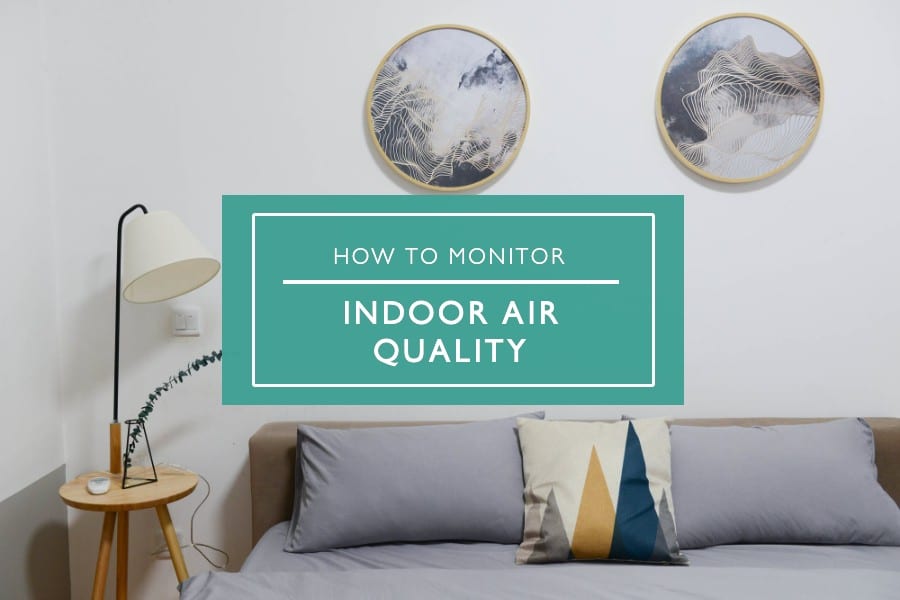Monitoring Your Indoor Air Quality: The Terms & Numbers You Need to Know
Indoor air quality has become a strong trend in the home improvement market over the past few years. With improved indoor air resulting in benefits such as better sleep, improved respiratory health, and lower utilities, this is no surprise. However, for many homeowners, the many air quality improvement products on the market may seem a bit overwhelming.
How does one best evaluate how to determine what products are right for them? It starts with understanding the various terms and important metrics associated with indoor air quality.
What is Indoor Air Quality?
First, it is important to understand what is meant when the term indoor air quality is used. As one would imagine, this refers to the quality of breathable air inside and around buildings and structures such as homes and office spaces. This is important because research has shown that the quality of air indoors is often much worse than outdoor air.
Indoor air quality conventionally refers to the “breathing zone,” an area defined as the space within nine inches of a person’s nose and mouth. Contaminants measured in this breathing zone are assumed to be present in equivalent concentrations throughout the indoor environment.
What Affects Indoor Air Quality?
There are two major causes of indoor air quality problems: particulates and inadequate ventilation.
Particulates refer to the presence of anything solid or liquid that is suspended in the air. This can include natural substances such as pollen and dust as well as things such as chemicals and smoke. There are a number of sources of particulates including appliances, building materials, human actions, and the outdoor environment.
Ventilation refers to the access of fresh air to an indoor space. There are many types of ventilation; however, the major source is obviously mechanical ventilation systems. These include things such as outdoor-vented fans such as those found in bathrooms and kitchens as well as air handling systems Inadequate ventilation is problematic because it can easily increase the levels of pollutants within the air of a home.
Relevant Metrics
Perhaps the most confusing aspect of indoor air quality for homeowners looking to renovate are the various metrics that are used to determine the quality of air indoors. There are a number of metrics used to assess indoor air quality. Let’s take a look at some of the most common.
Relative humidity refers to the ratio of the partial pressure of water vapor to the equilibrium vapor pressure of water at a given temperature. What does this mean? Essentially, it is the amount of water vapor that is present in the air. High levels of relative humidity can increase how warm we feel. It also causes the lungs to constrict while also enhancing the likelihood that air will trap different pollutants. It is recommended that relative humidity is between 30% and 50%.
Particulate matter concentration is an extremely important metric for indoor air quality. This refers to the measurement of solid and liquid particles that are contained in the air. As mentioned earlier, this includes things like dust, smoke, and pollen. Some particles can be seen while others are extremely tiny and require an electron microscope.
There are two typical references to particulate matter concentration. PM10 refers to inhalable particles that are 10 micrometers and smaller while PM2.5 refers to fine inhalable particles 2.5 micrometers and smaller. For comparison, an average human hair is 70 micrometers in diameter. This is why sensors are important for measuring indoor air quality. Indoor air should have no more than 10 micrograms per cubic meter of PM10 and 2.5 micrograms per cubic meter of PM2.5.
Volatile organic matter concentration is another key metric. Volatile organic matter refers to a large group of chemicals found in products used in homes. These chemicals off-gas, meaning that they release into the air that we breathe. Some are harmful alone while others can be harmful if they combine with other substances in the air.
The concentration of volatile organic chemicals in homes can be over a thousand times that of outside air. Volatile organic matter concentration is a measurement of the presence of these substances in the air.
Perceived air quality or PAQ is a far less scientific concept but an important one nonetheless. This refers to people’s impressions of the quality of air inside a space. It is typically ascertained by the completion of questionnaires. While people are often unaware of problems with air quality, a low PAQ is certainly indicative of potential problems that should be addressed.
Exposure limits is another term that should be understood. This refers to the maximum amount of substances that a person should be exposed to and is used as a maximum threshold for measuring indoor air quality. Exposure limits are typically measured in parts per million and vary depending on the substance being measured.
Exposure Limits of Particulates
The National Institute for Occupational Safety and Health establishes exposure limits for various substances. Below are some rates for some of the most concerning causes of poor indoor air quality:
Carbon Monoxide | Volatile Organic Matter | Formaldehyde |
<9 ppm
Fill Counter
Less than 9 parts per million | <500 mg/m3
Fill Counter
Less than 500 micrograms per cubic meter | <27 ppb
Fill Counter
Less than 27 parts per billion |
Carbon Dioxide | Radon |
700 ppm
Fill Counter
700 ppm above outdoor levels (i.e. 1,000 – 1,200 ppm) | <4 pCi/L
Fill Counter
Less than 4 picocuries per liter |
Final Thoughts
While assessing indoor air quality may seem daunting, it is a critical aspect of environmental health. Understanding the terminology and metrics used to determine whether indoor air quality meets standards is important for beginning to research products that can improve indoor air quality. For those wanting to get a sense of their indoor air quality, it may be worth having a professional indoor air quality test to determine the next steps.

